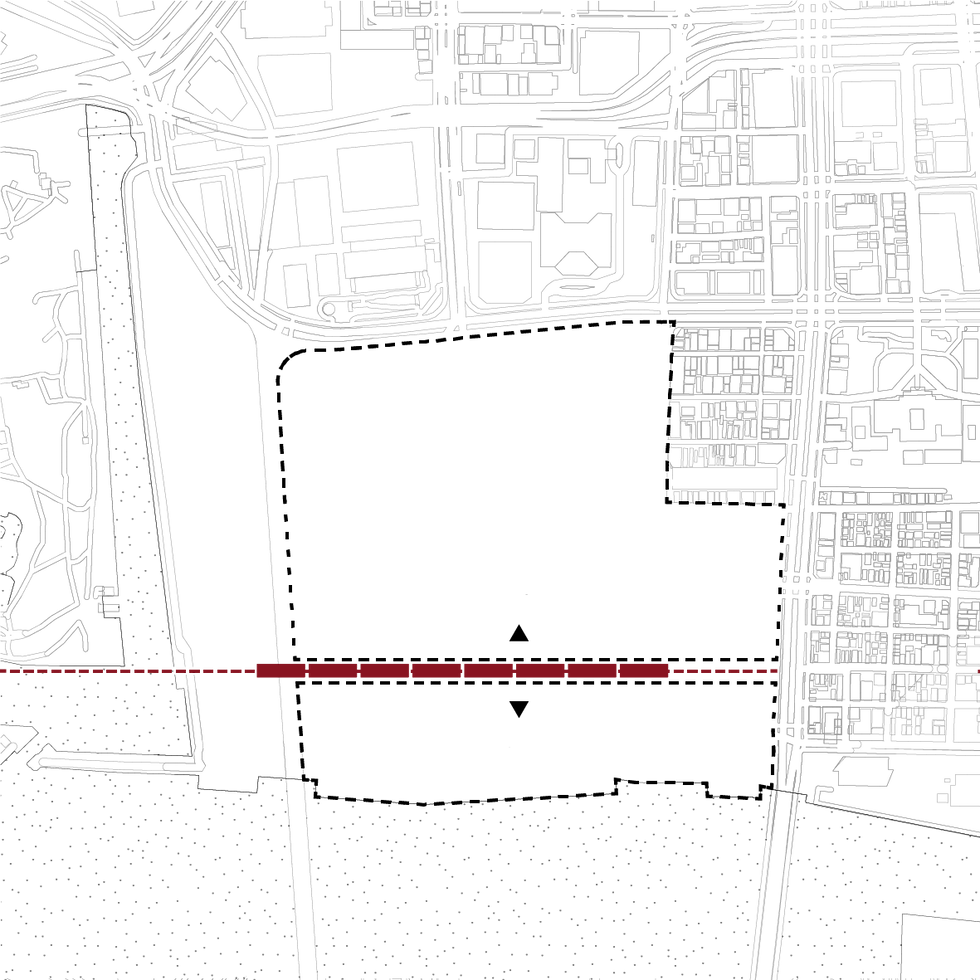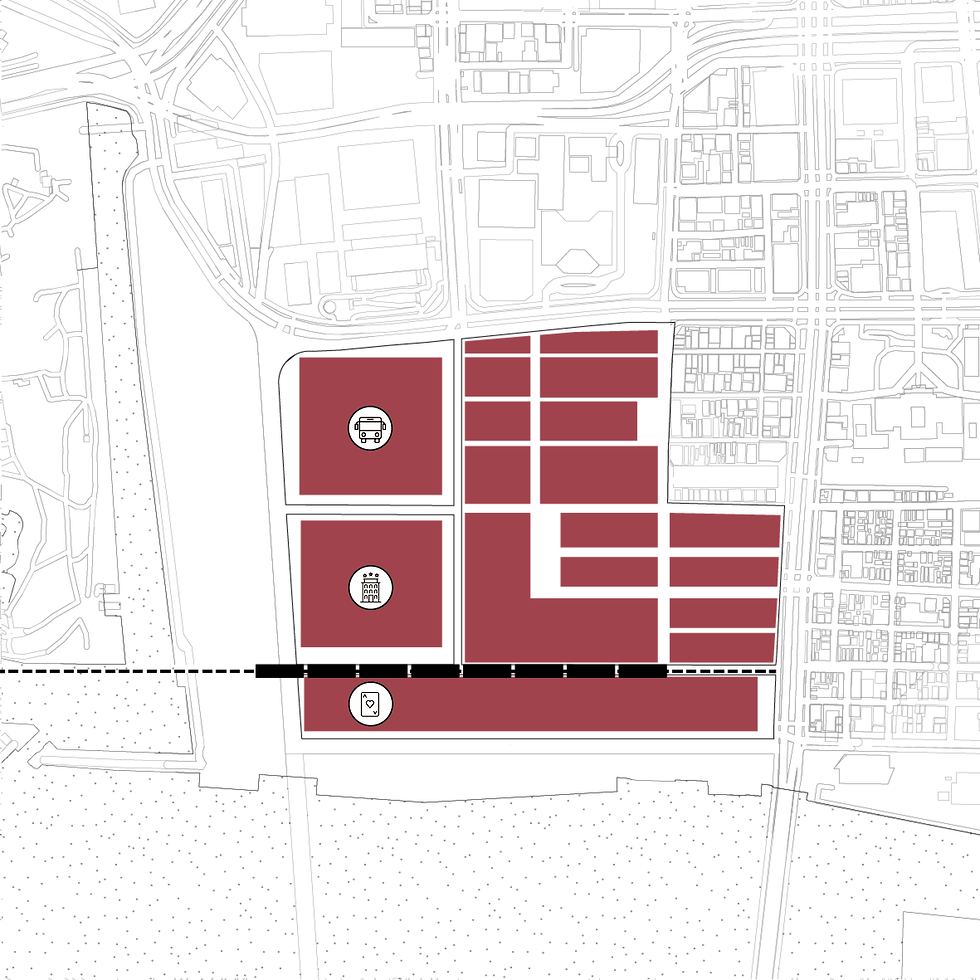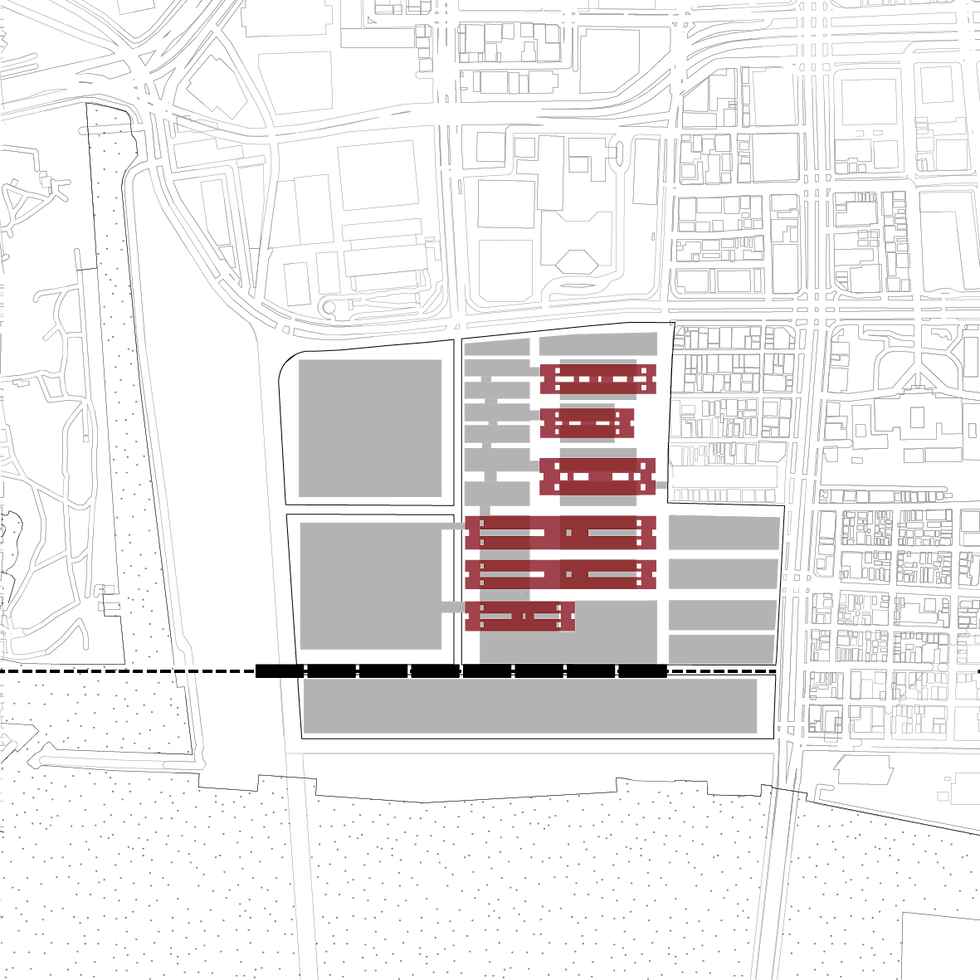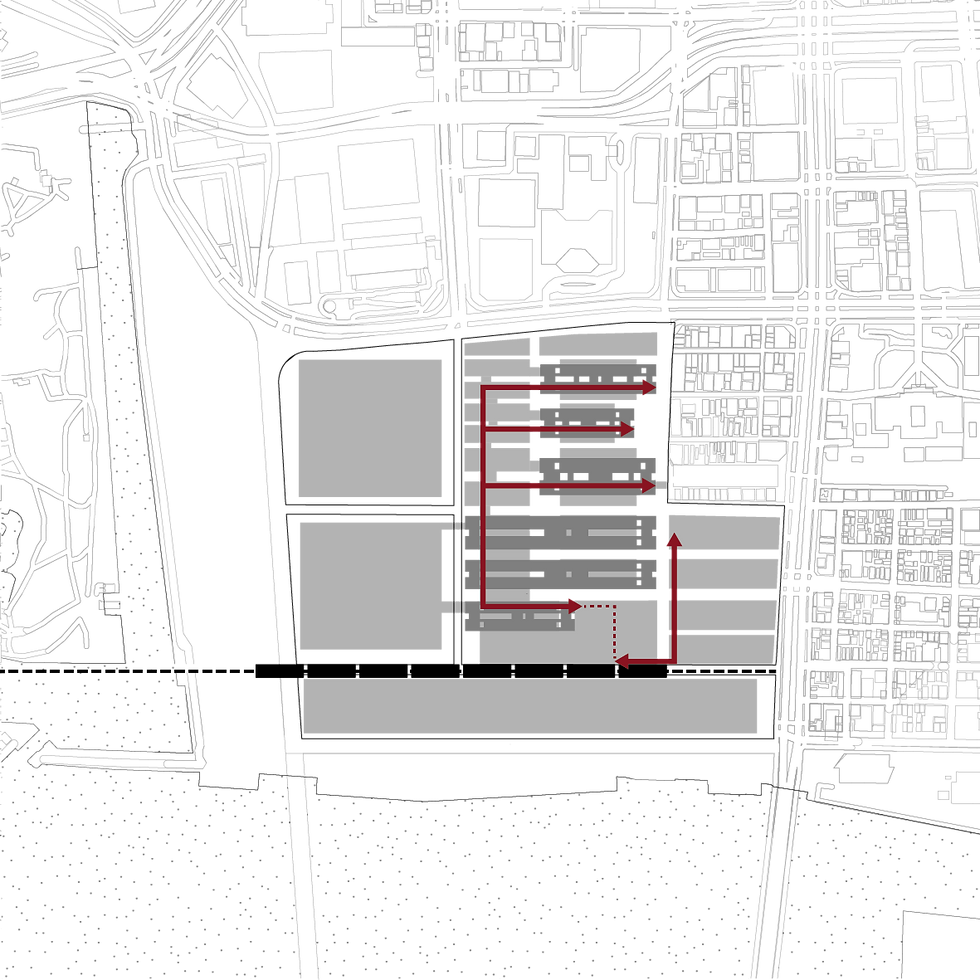
Fabric8
Fashion District
Year 4 Sem2 Elective
Group Work with Individual Component
This project assumes that a casino would be built on the site of the historic Tsukiji Fish Market once it has moved to Toyosu in October 2018. The recent move of Tsukiji Fish Market has created a void in Central Tokyo - a tabula rasa. A casino and an artist residency are proposed as an unlikely pair on the site, envisioning a prospective economic system for a greater Tokyo by subverting the notion of the traditional casino model as being a site of vice to becoming the core profit-generating engine for the fashion industry in Japan. The role of the casino is reimagined as a “church” - a social institution that gives back to the society.
The first urban gesture is a trainline infrastructure that stretches from Haneda Airport to Tsukiji, to channel tourists and international artists on site. The programme of a fashion design district is chosen due to its close proximity to the high-end fashion district of Ginza. The local artist residencies are designed in flexible configurations by size of studios, privacy level and activity programme. The whole area becomes into an autonomously run and economically viable programme in Tokyo’s urban fabric, turning both the gears of Gross Domestic Product (GDP) and forwardthinking fashion creatives for branding and international recognition. Seemingly opposing and contrasting intentions work together in symbiosis for a grander future.

Train line creates duality of site - casino and residency.

Land parcelisation and phasing projection

Continuation of on-site street and building grains

Creation of entrances and responding programmes

Programmatic overlap - residential, production, collaboration

Vertical Circulation through placement of cores

Placement of residential blocks on top of workshop podiums

Continuous fabric rail network for transportation of goods

Exhibition that allows for modal change and flexible adaptations according to needs


 |  |  |
|---|

